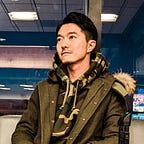Mini Story — Why I Took This Photo — #2 (Film, Rolleiflex TLR)
This is part of the mini-story series where I share details on some of the photos I’ve taken. Like my other stories, it focuses more on the creative and thought processes instead of just the technical details, because I am a firm believer that your right-brain activity is equally, if not more, important than the technical aspects in photography.
Background: This is a very special photo from my collection. It is unique in several ways. First of all, it was taken by a special camera of mine— Rolleiflex Twin Lens Reflex, manufactured back in the WWII era. Secondly, it was taken in one of my favorite cities — Tokyo. And lastly, it is the kind of photo that not only is aesthetically pleasing but also tells a unique cultural story of the place that it was taken.
What motivated me to take the shot: I wanted to tell a story about the unique Tachigui (standing noodle shop) culture. In Japan, you will find many restaurants like this — there is no seat. You order your food from a machine, wait for your order to be ready, and then stand and eat your food. What this photo captured is a very typical Japanese office worker having his breakfast before going to work (the time was around 7am).
Equipment used: I already mentioned that this was taken by my vintage Rolleiflex film camera. It is certainly not…
